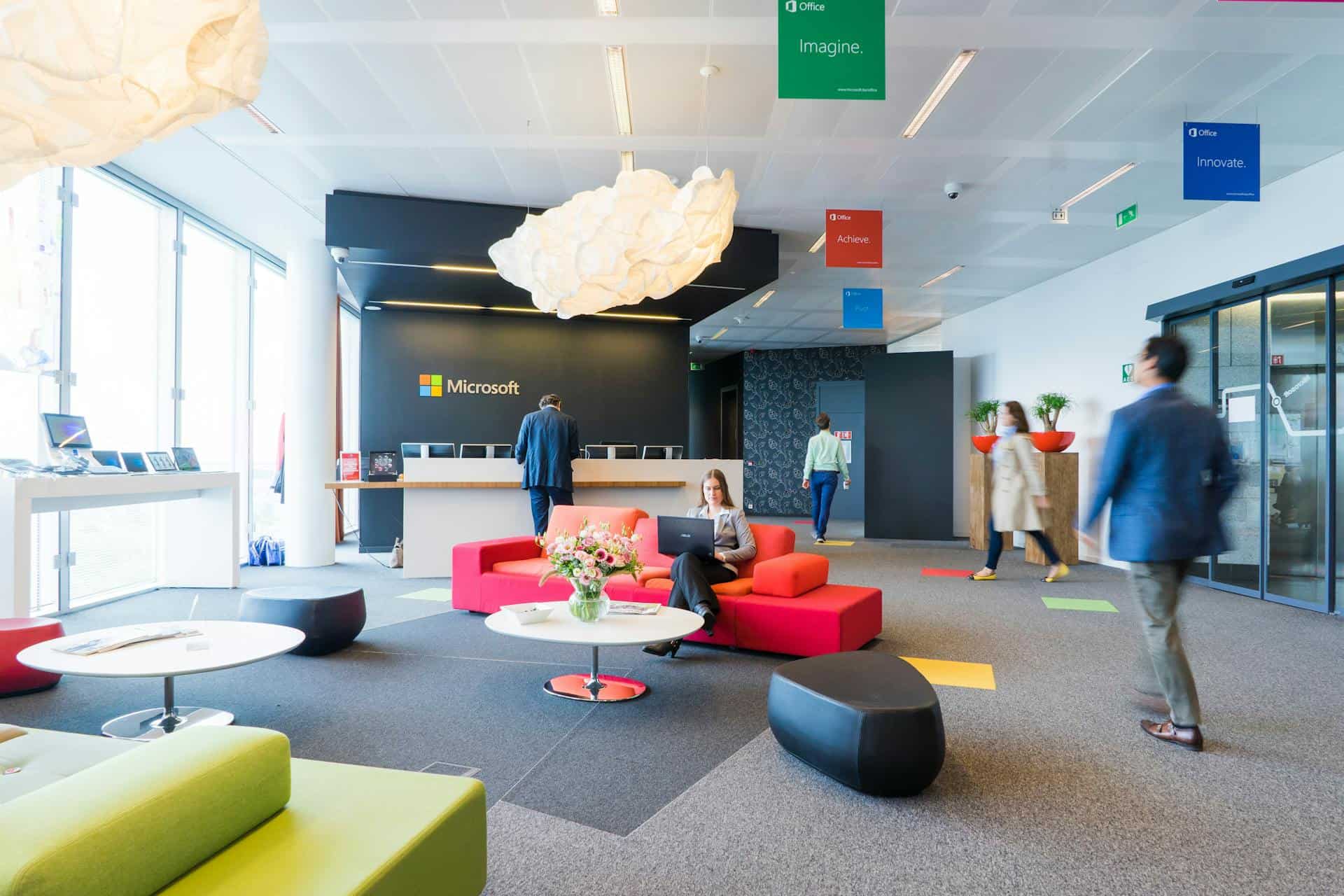The Truth About Return-to-Office Headlines: Why the Data Tells a Different Story

In recent months, headlines have frequently proclaimed that companies like Amazon are demanding employees return to the office in droves, signaling the end of the flexible work era. However, contrary to these attention-grabbing headlines, reliable and objective data from sources like the U.S. Bureau of Labor Statistics (BLS) shows a steady increase in workplace flexibility, with more employees enjoying hybrid and remote work arrangements in 2024 than in the previous year.
Return-to-Office Headlines vs. Objective Data
The sensationalism around a supposedly ever-growing return to the office is largely driven by cherry-picked stories. Headlines often focus on the loud proclamations of a few high-profile CEOs or companies cracking down on flexible work. These narratives grab attention but are not necessarily representative of broader trends. In reality, many organizations are quietly adapting to employee preferences for flexibility, finding that the rigid mandates announced in the early post-pandemic phase are difficult to enforce and often counterproductive.
A clear example of this disconnect is found in the August 2024 jobs report from the BLS. Contrary to the narrative of a massive return to office, the data reveals a year-over-year increase in the number of employees who work from home, either some of the time or all the time. Specifically, 22.8% of workers reported teleworking for some or all of their job in August 2024, up from 19.5% in the same month the previous year. Among hybrid workers – those who work remotely only some of the time – the share climbed from 9.2% to 11.7% over the same period; those who worked remotely all the time increased to 11.1%, up from 10.3%
This government data is backed up by similar findings from highly credible private sources. For example, the eighth annual Owl Labs state of work report finds that the number of fully in-office workers fell from 66% in 2023 to 62% in 2024, while the number of hybrid workers rose from 26 to 27% and fully remote from 7 to 11%. Overall, the BLS data is more trustworthy on actual proportions of each, since they have a broader and deeper data set, but the similarity in trends is telling.
The uptick in remote and hybrid work is a strong indicator that many employers are becoming more accommodating, even as some continue to trumpet a return to office rhetoric. This shift is driven by practical considerations. For example, several CEOs at companies I work with on helping determine their flexible work arrangements have increasingly chosen to – quietly – cease enforcing in-office attendance rules when they realized that the effort to monitor and manage these requirements was becoming more trouble than it was worth. The initial worker backlash to strict return-to-office policies did not subside as expected, but rather continued to escalate, diverting managerial attention away from more strategic concerns.
A variant of this pattern is the “hushed hybrid” trend, where workers collaborate secretly with their managers to come to the office less frequently than the C-suite wants. Essentially, the managers undermine company policies because they recognize it would be a lot of hassle to enforce them, and not worth the resentment this enforcement would cause. Thus, many workers come in once or twice a week, even if the requirements might be three days a week.
On a related note, witness the rise of “coffee badging,” where employees might follow the letter of the law but undermine its spirit. Namely, they come into the office the required three – or even four or five – days a week, long enough to grab a coffee and meet with a colleague, and then go home.
No wonder that the 2023 Global Traffic Scorecard by traffic analysis firm INRIX Inc. observed significant changes in commuting patterns, with a decrease in peak morning and evening traffic congestion and an increase around midday. This shift suggests that many employees are taking advantage of more flexible work hours, leading to a new kind of workday that departs from the traditional 9-to-5 model. Moreover, the global nature of this survey shows the trend of flexibility is not limited to American companies.
The Myth of the “Great Return” in Return-to-Office Headlines
The persistent narrative of a “great return” to the office is not only misleading but also fails to account for the growing body of evidence that suggests a preference for flexibility is reshaping the modern workplace. For instance, a June 2024 survey from the Conference Board found that nearly half (45%) of HR professionals in companies with strict in-office mandates reported difficulties retaining employees. In contrast, only 15% of HR professionals in companies offering flexibility faced similar retention challenges. This stark contrast highlights how rigid office attendance policies can be detrimental to talent retention.
Similarly, a recent report from the Johns Hopkins Carey Business School in partnership with Great Place to Work identified strong positive links between flexible work models and employee well-being. The study analyzed the percentage of a company’s workforce permitted to work remotely for part of the week. Companies where at least 75% of employees had the option to work remotely part-time reported the highest levels of well-being. In contrast, firms where fewer than 25% of employees had this flexibility scored the lowest. A similar trend was observed with flexible work schedules. Organizations that allowed a larger share of their workforce to choose their in-office hours experienced a more positive and healthy work environment.
It’s clear that for many professionals, the option to work remotely or in a hybrid model is non-negotiable. Recent findings from an Owl Labs survey support this view, revealing that 66% of employees would consider looking for a new job if the ability to work from home were removed, and 39% would quit immediately. This data underscores a significant shift in worker priorities, where flexibility, work-life balance, and mental health support are becoming more valued than traditional benefits or even salary increases.
Data from Robert Half, a staffing firm, provides further evidence that the job market is tilting decisively towards flexible work arrangements. According to their reports, the number of fully on-site roles has steadily decreased over the past year. In Q1 2023, 83% of job postings were for fully on-site roles. By Q2 2024, that figure had dropped to 67%, down from 69% in Q1 2024. Meanwhile, job postings for hybrid and remote roles have been steadily increasing. For example, hybrid job postings have risen from 9% in Q1 2023 to 22% in Q2 2024, while remote job postings have grown from 7% to 11% over the same period.
The Way Forward: Embracing a Hybrid Future
In the face of these trends, it is becoming increasingly clear that employers who cling to the idea of a full-scale return to the office may be fighting a losing battle. Workers have demonstrated that they are willing to push back against rigid attendance rules, and the data shows that they are succeeding in securing more flexibility. The year-over-year increase in remote and hybrid work signals that flexible work is here to stay. Companies that recognize this reality and adapt their policies accordingly will likely find themselves in a stronger position to attract and retain top talent.
Key Take-Away
Return-to-office headlines often exaggerate a shift back to in-office work, but objective data shows that workplace flexibility is on the rise. Companies that embrace hybrid and remote models attract and retain talent better, highlighting a… Share on XImage credit: Proxyclick Visitor Management System/pexels
Dr. Gleb Tsipursky was named “Office Whisperer” by The New York Times for helping leaders overcome frustrations with hybrid work and Generative AI. He serves as the CEO of the future-of-work consultancy Disaster Avoidance Experts. Dr. Gleb wrote seven best-selling books, and his two most recent ones are Returning to the Office and Leading Hybrid and Remote Teams and ChatGPT for Thought Leaders and Content Creators: Unlocking the Potential of Generative AI for Innovative and Effective Content Creation. His cutting-edge thought leadership was featured in over 650 articles and 550 interviews in Harvard Business Review, Inc. Magazine, USA Today, CBS News, Fox News, Time, Business Insider, Fortune, The New York Times, and elsewhere. His writing was translated into Chinese, Spanish, Russian, Polish, Korean, French, Vietnamese, German, and other languages. His expertise comes from over 20 years of consulting, coaching, and speaking and training for Fortune 500 companies from Aflac to Xerox. It also comes from over 15 years in academia as a behavioral scientist, with 8 years as a lecturer at UNC-Chapel Hill and 7 years as a professor at Ohio State. A proud Ukrainian American, Dr. Gleb lives in Columbus, Ohio.

